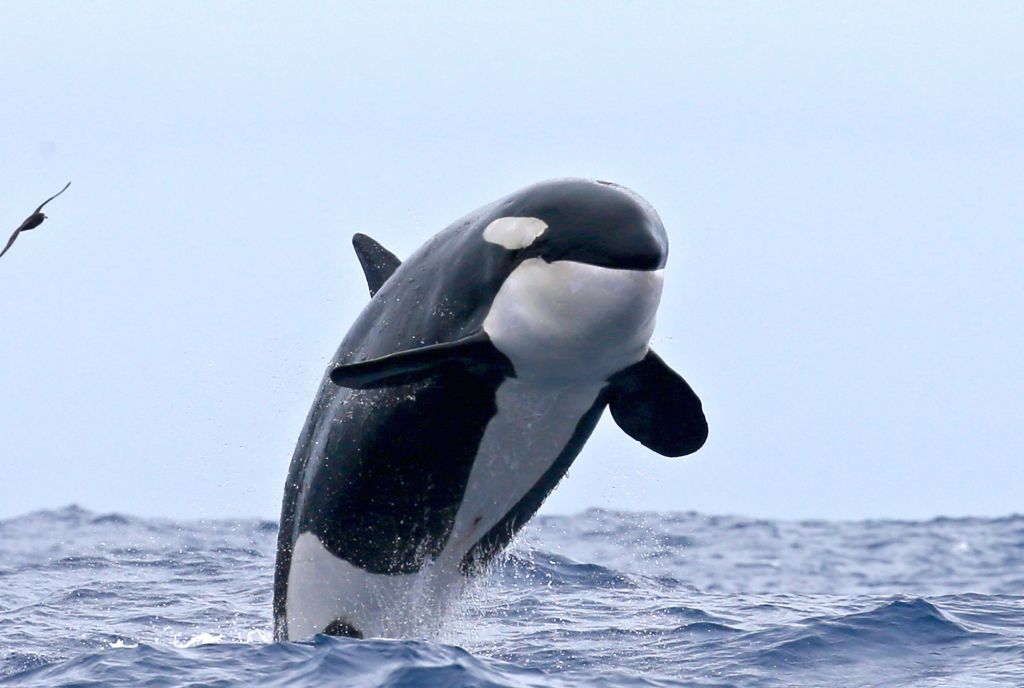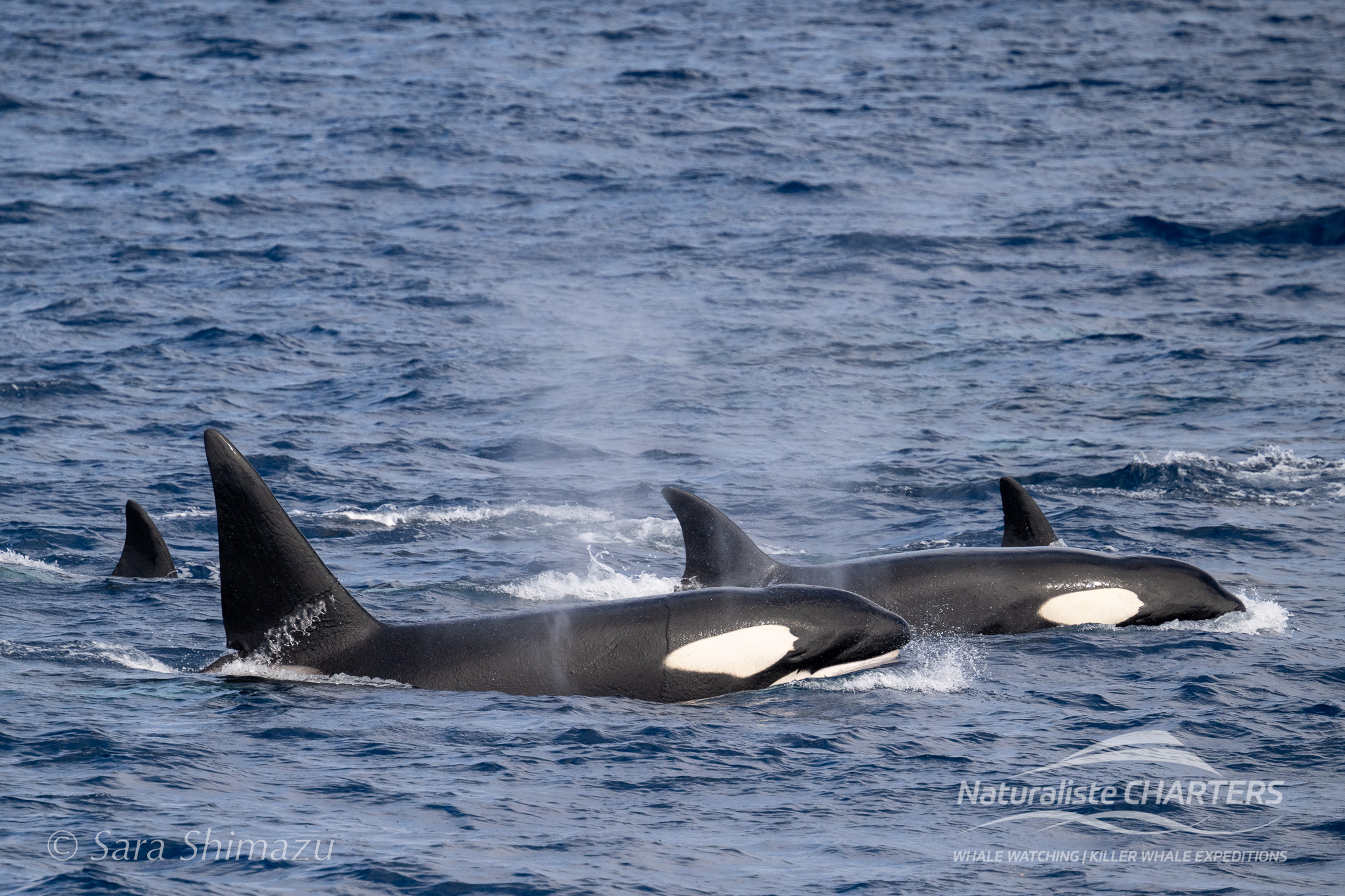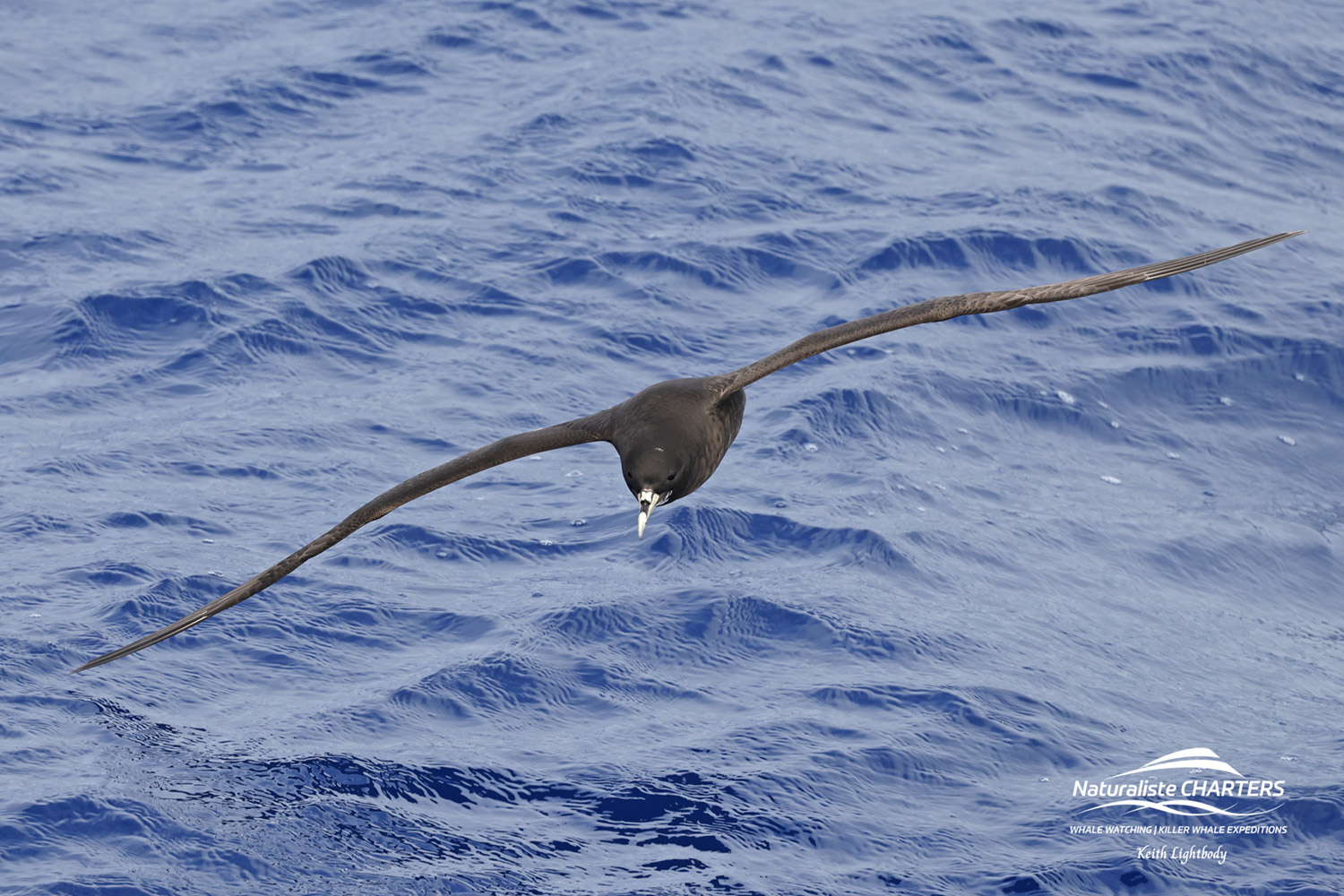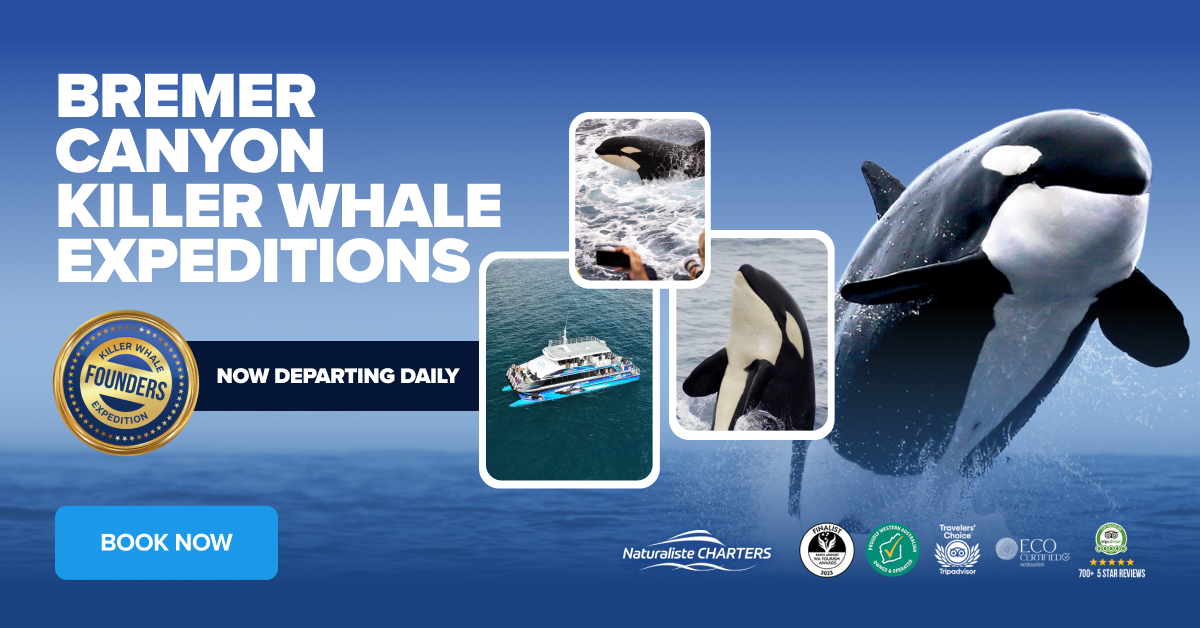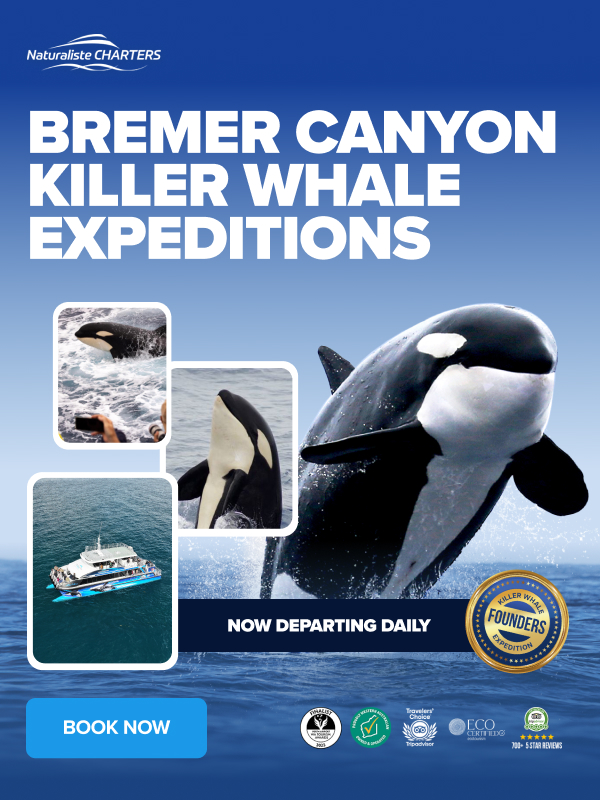Whales conjure up great mystery and imagination, making them so exciting to see! These ocean giants propel their entire bodies out of the water, migrate with the seasons, communicate, display both empathy and intelligence and live at depths we can barely comprehend. Here in southern WA, we are fortunate, because, for us, whales off our coasts are a part of life. We see many different species, and each has their own unique characteristics. So let’s have a look at the different types of whales you are likely to witness as we venture away from shore.
Giant Filter Feeders and Toothed Predators
As you probably know, whales are mammals. This means they are warm blooded and also provide milk for their offspring. This is amazing considering the size of their young and the cool depths these creatures dive to. All the different types of whales are classified within the order Cetacea, and suborders Mysticeti or Odontoceti. We are lucky to see both suborders of whales on our tours.
Mysticeti whales (baleen)
Mysticeti whales otherwise known as baleen whales have baleen plates which they use to filter small marine organisms they prey on (like krill). They are HUGE in size, with females growing slightly larger than males in all species. Baleen whales are migratory and move from high latitudes (such as Antarctica) where they feed during the summer months, to low latitudes (closer to the tropics) in winter where calves are born and mate.
As these whales head south towards Antarctica for the summer, with their calves, they are already pregnant again! We see baleen species such as the Blue whale, Humpback whale, Fin whale and Southern Right whales on our tours.
Baleen whales produce loud, low frequency sounds which originate from their larynx. These sounds travel a very long way in the ocean (over hundreds of kms) and are an important and effective communication method. Amazingly, they are fitted with an organ called the laryngeal sac, which allows them to recycle the air they use to make sounds at depth. This means they can communicate, and spend longer time diving into the deep blue before coming up for a breath.
Odontocete whales (toothed)
separated from baleen whales about 34 Million years ago, they use an entirely different strategy to hunt. They include toothed whales, dolphins and porpoises. These toothed predators use echolocation and send sonar clicks into the water column, allowing them to dive deep to find their prey by creating a 3D map of the depths below. Toothed whales have just one blowhole.
On our tours we see Killer whales, Sperm whales, Beaked whales, Long finned pilot whales, False killer whales and many dolphin species! Some species of Odontocete are fierce! Come killer whale watching with us to see this!
All the different types of whales we see have particular features and mannerisms which set them apart from other species, and help us identify which species we are seeing. So let’s have a closer look. You will be a whale identification pro before you even come onboard.
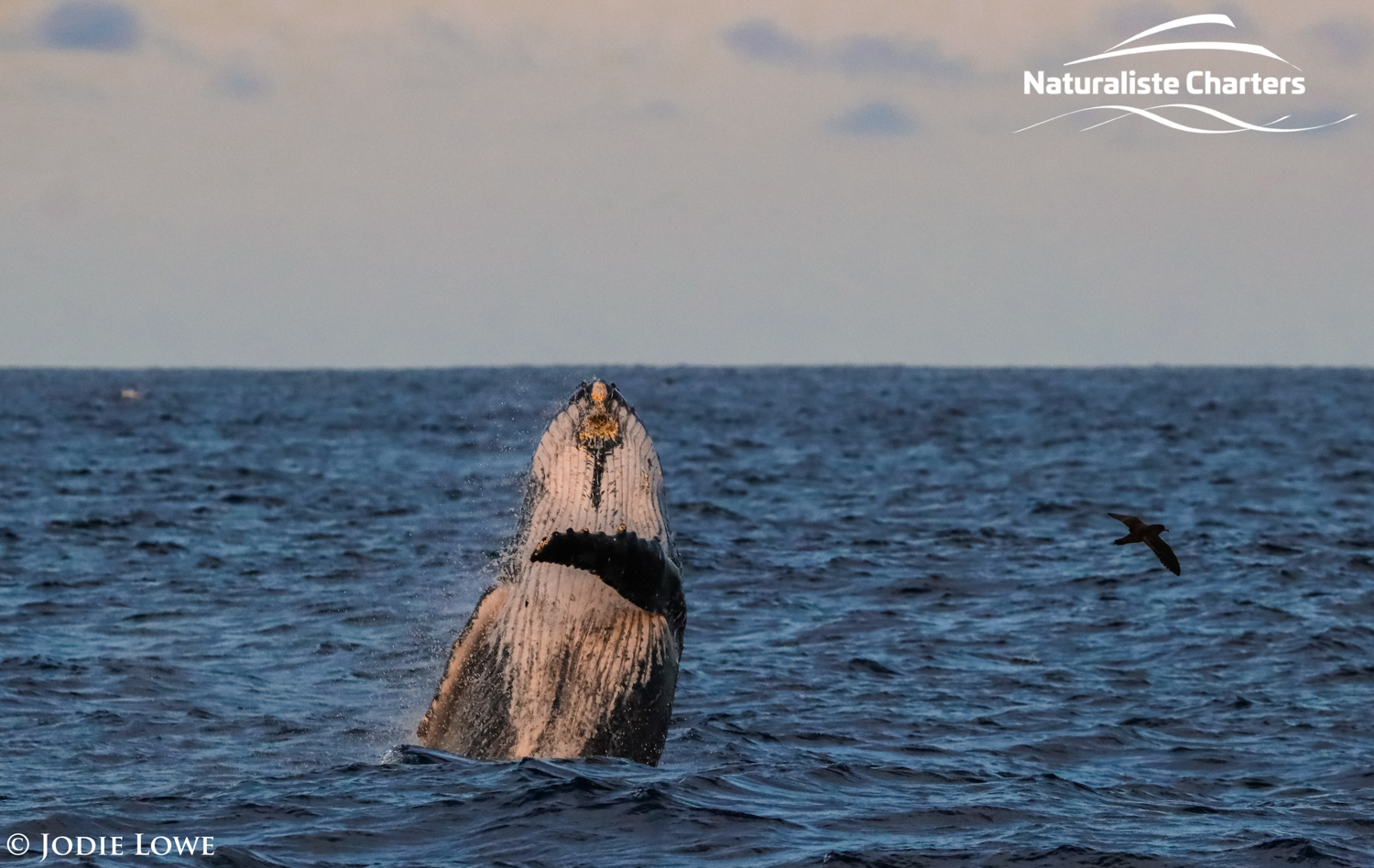
Baleen Whales
Blue Whale
This means they are warm blooded. Being the largest animal that has EVER lived on the planet (including dinosaurs), the Blue whale is most certainly a gentle giant. With a shy demeanour, this creature typically spends time alone or in pairs. Blue whales favourite food is krill! Two subspecies of Blue whale are seen in the south of Australia, being Antarctic and Pygmy Blue Whales. They are both huge!!!
Scientific Name: Balaenoptera musculus.
Status: Endangered (but increasing), estimated to be between 5000-15,000 individuals.
Size: recorded over 30m long; typically 50 – 150 tone!
Blow: Tall long and bushy blow
Flute: Grey, classic ‘whale’ shape, but big… can be around 7.5m wide.
Characteristics: Long slender grey body which looks blue under water.
Humpback Whale
The Humpback whale are aerial and acrobatic, spending lots of time breaching and playing, they are fantastic to see whilst out whale watching. The males all share the same song (which can last 20mins!), with these songs changing across time collectively.
Scientific Name: Megaptera novaengliae
Status: Least Concern (and still increasing); approximately 80,000 animals across the globe.
Size: 14-16m long
Blow: bushy
Tail fluke: Dark on top and white underside.
Characteristics: really long pectoral (side) fins and a dorsal (top) fin two thirds of the way down its body. Dark on top and white underside.
Southern Right Whale
This whale is large, round and is known to loll in a very relaxed state indeed. Though southern rights can also put on a show, known to spyhop, lobtail and breach. With favourite foods of krill and other crustaceans, these big beauties sure do well to fill up on their tiny prey. Southern Right whales typically move between Antarctica in the summer to southern Australian waters in the winter. Calving typically occurs in shallow waters less than 10m deep between May and October, with mothers returning to the same sites to give birth to offspring every three years.
Scientific Name: Eubalaena australis
Status: Listed as Vulnerable in Western Australia
Size: 16-18m long; can be up to 80 tone
Blow: ‘V’-shaped
Flute: Looks like a wide triangle with a notch.
Characteristics: white/yellowish lumps and bumps on its head called callosities are a good distinguishing feature.
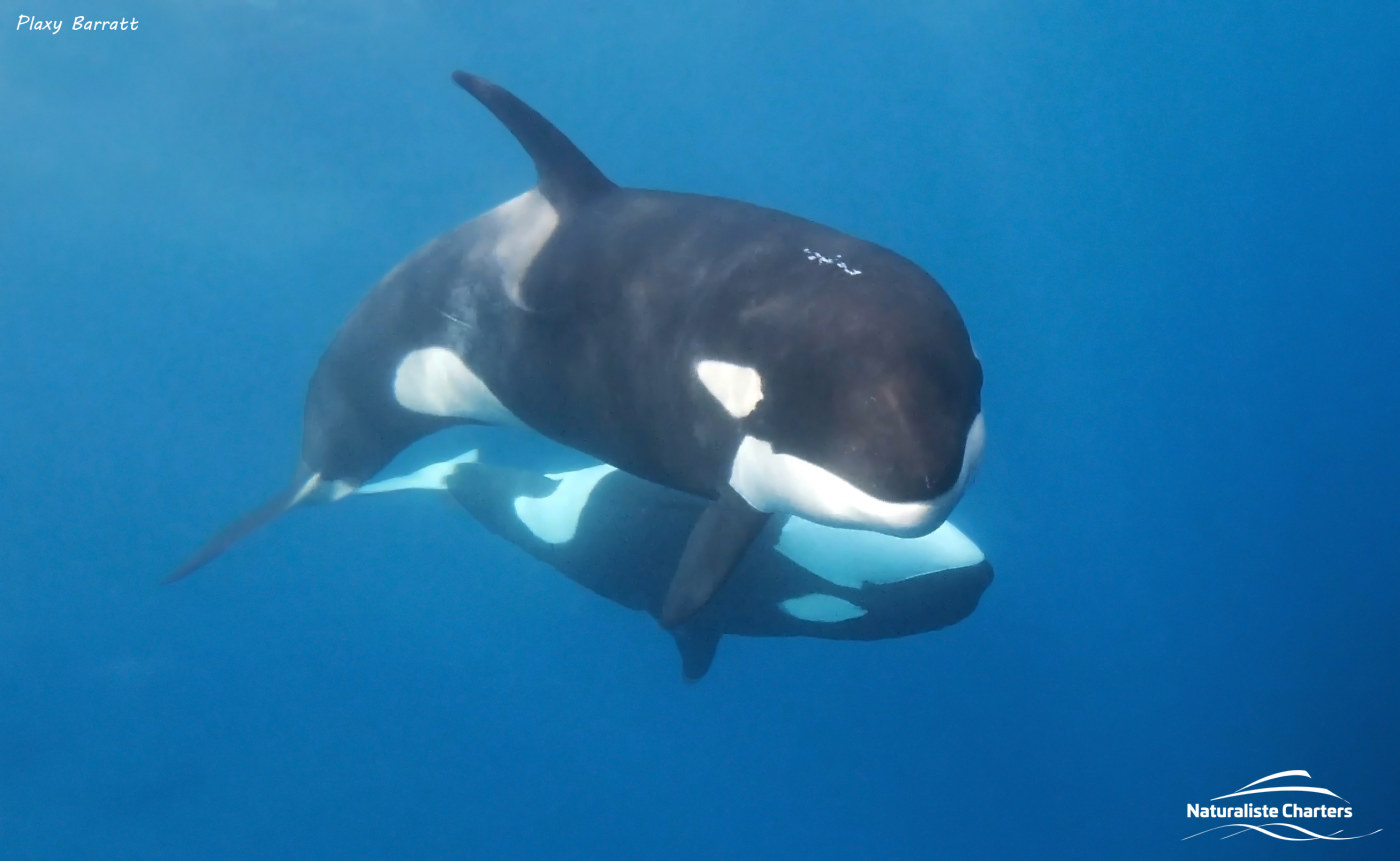
Toothed Whales
Killer Whale
This means the killer whales really are the oceans APEX predator, being fast, agile, cooperative and intelligent. We have seen these animals predate on Beaked whales, finfish, giant and colossal squid and amazingly, Blue whales. They can reach 70km per hour when they have somewhere to be, and can hold their breaths for up to 15mins as they dive down to 900m. With a large brain/body ratio – orca are highly intelligent! The wonder of these animals needs to be seen to be believed, so come Killer whale watching with us to get a taste.
Scientific Name: Orcinus orca
Status: Data deficient (global population 50,000)
Size: 6.5-9.5m length
Blow: 1m high
Flute: white underside, black top.
Characteristics: black bodies with white patches, uniquely shaped allowing for identification of individual animals.
Sperm Whale
They are epic creatures and the largest of the toothed whales. They dive deeper than 1km, with dives of up to 90mins (presumably batting giant squid). These whales eat only cephalopods (squid and octopus). We often see pods of juvenile sperm whales cruising along the Bremer Canyon system whilst on our Orca whale watching tours. A pod of breaching Sperm whales is quite a sight, like giant triangles performing vertical leaps towards the heavens, then coming down with an almighty splash!
Scientific Name: Physeter macrocephalus
Status: Vulnerable
Size: up to 18m length.
Blow: 45 degree angle slightly to the left
Flute: robust base of tail, undulating tail base.
Characteristics: A huge head which is nearly ⅓ of its total length, and a narrow toothed lower jaw. Lots of scratches, notches and wrinkles. A sperm whale taking its final breaths before a dive arches its back revealing its dorsal fin, watches for its tail as it will rise up and then slip into the depths below.
These are just some of the different types of whales you may see on our whale watching tours.

